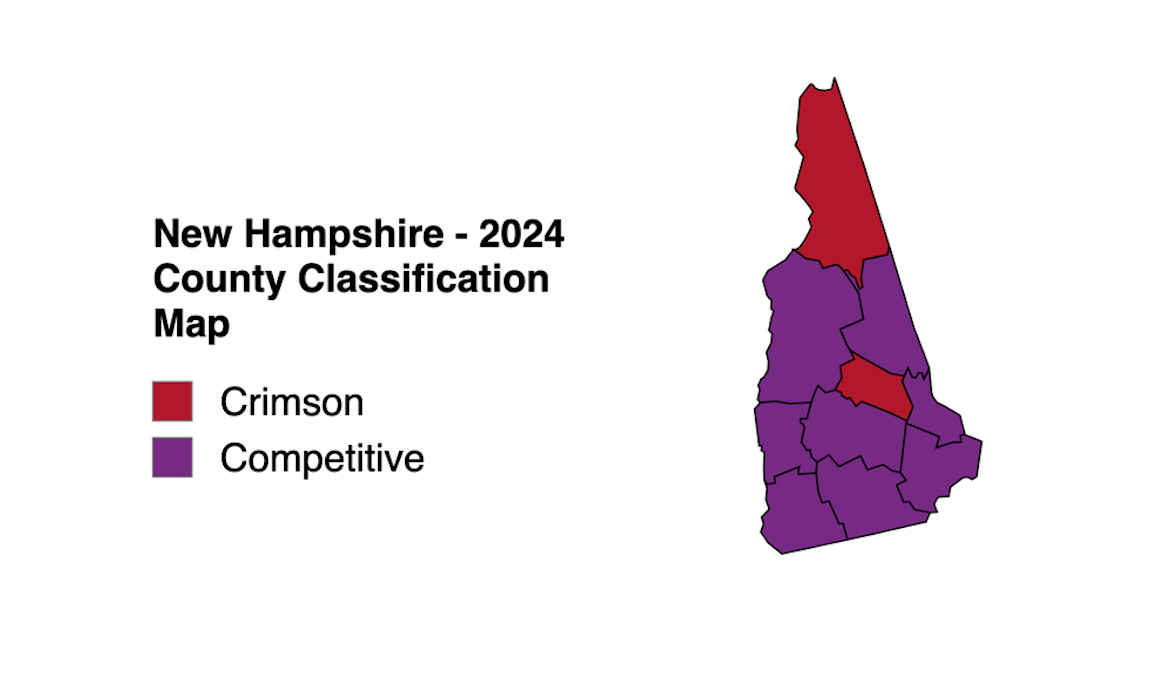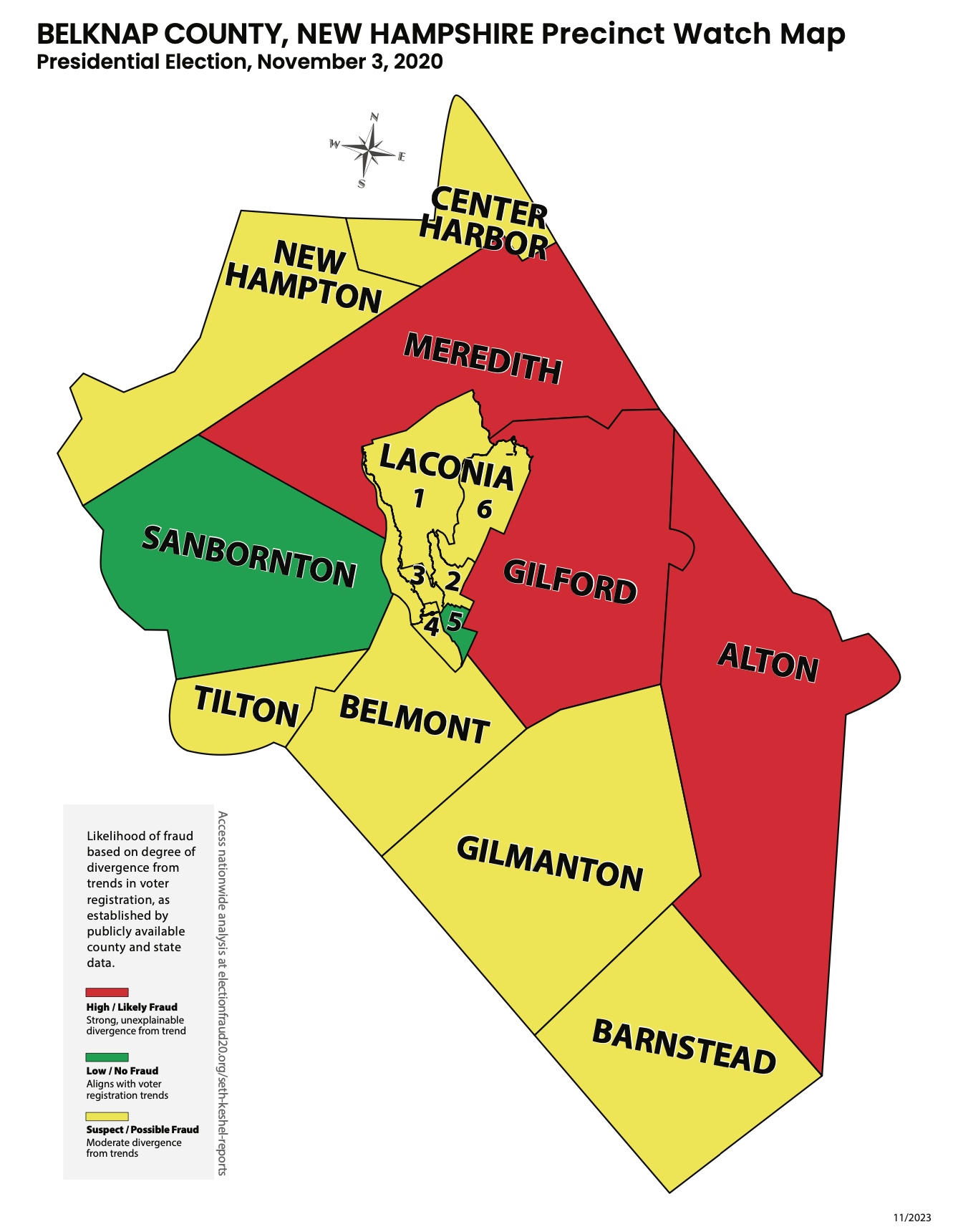Situation
New Hampshire has a great motto, “Live Free or Die,” but the fortunes of the Republican Party in presidential elections have taken a significant downturn in this century. Thanks to big Trump momentum and a large third-party vote share in 2016, Trump finished within 3,000 votes of Hillary Clinton and probably would have won the state for the first GOP presidential victory there since 2000 if not for the exploitation of New Hampshire’s same-day voter registration woes.
I consider New Hampshire the most distant, and probably the least likely to go for Trump, of the seven decisive states in this year’s presidential election. It is one of few states I believe should have had an organic left swing in 2020, going to Biden by more than it went to Clinton but, of course, by far less than certified; however, I believe it may surprise as a close state, which is not the subject of this article, which focuses on county trend. New Hampshire looms large if Trump needs to piece together an inside straight to reach 270, likely paired with Nevada to make up for 10 electoral votes that might fall out of the map somewhere else.
Before you get started, familiarize yourself with my county classification model. Everything you need to know about what follows is contained in that free article. And yes, this model accounts for the current state of electoral maladministration.
Party Registration Data
· Statewide
2020 Election: D+1.3% (+14,663 Democrat registration lead)
6/28/2024: R+4.8% (+42,966 Republican registration lead)
Crimson Counties (2)
Belknap and Coos Counties are likely to boost Trump by a total of 2,628, if (and that’s a big if) Harris slightly improves on Biden’s vote tallies and Trump maintains an average three-cycle growth rate.
Competitive Counties (8)
Keep reading with a 7-day free trial
Subscribe to Captain K's Corner to keep reading this post and get 7 days of free access to the full post archives.







